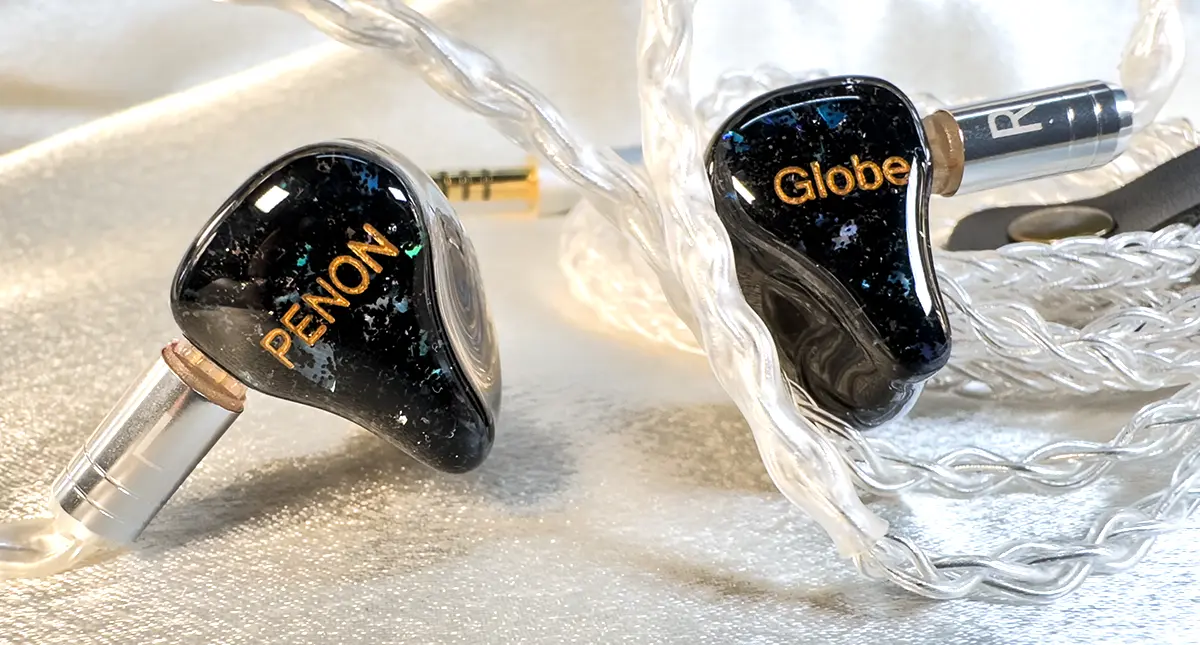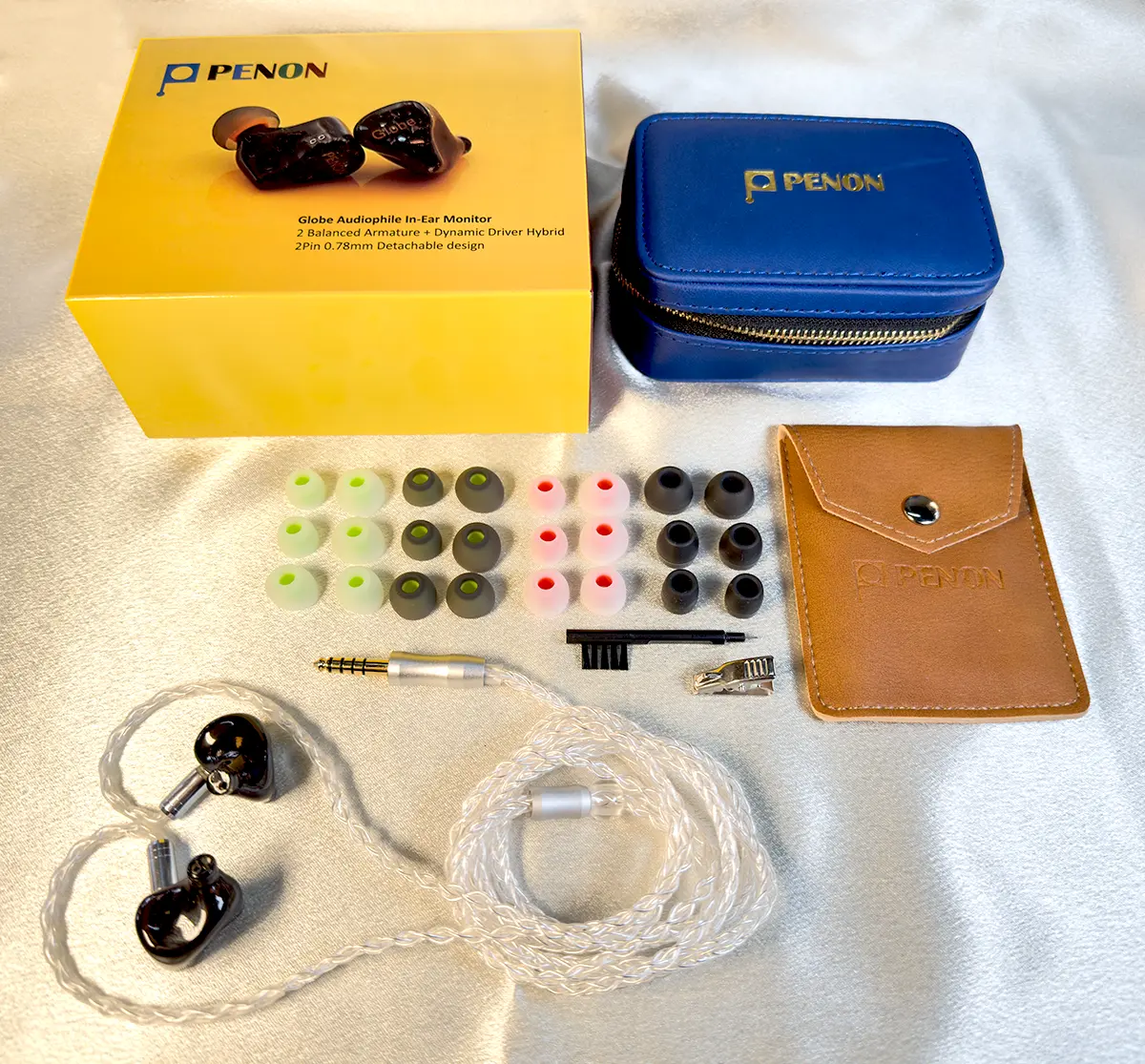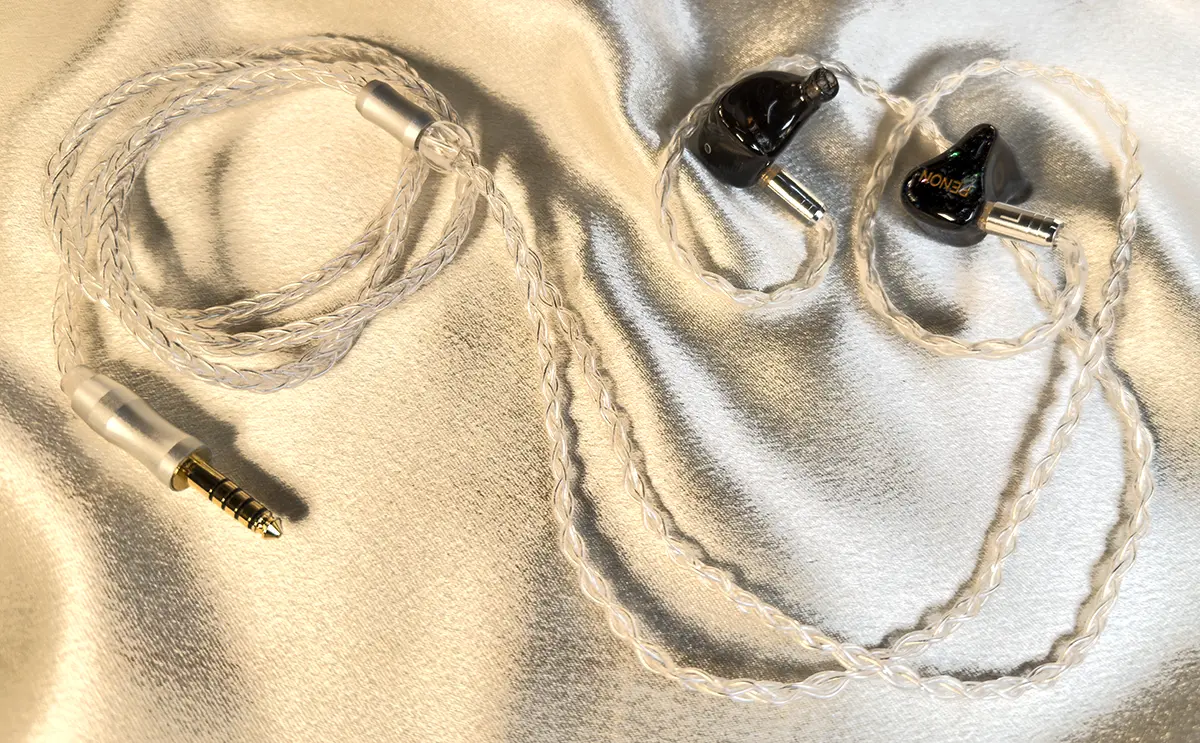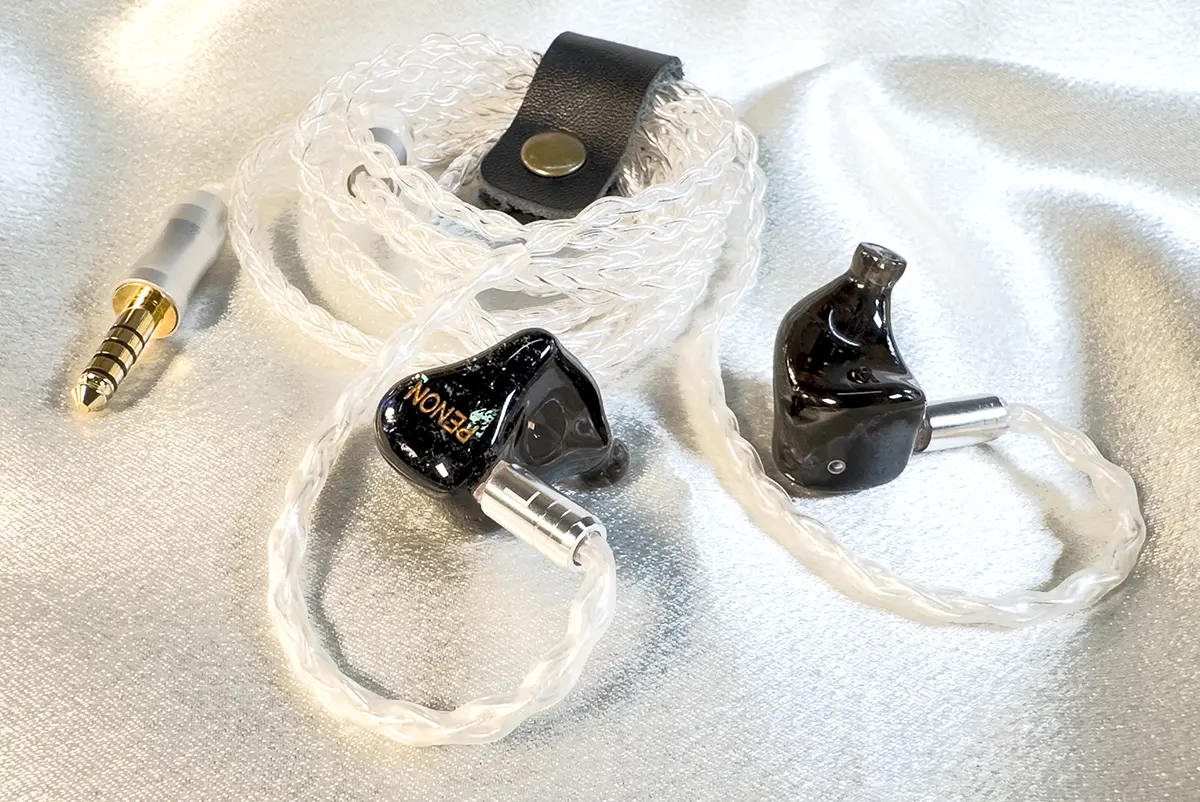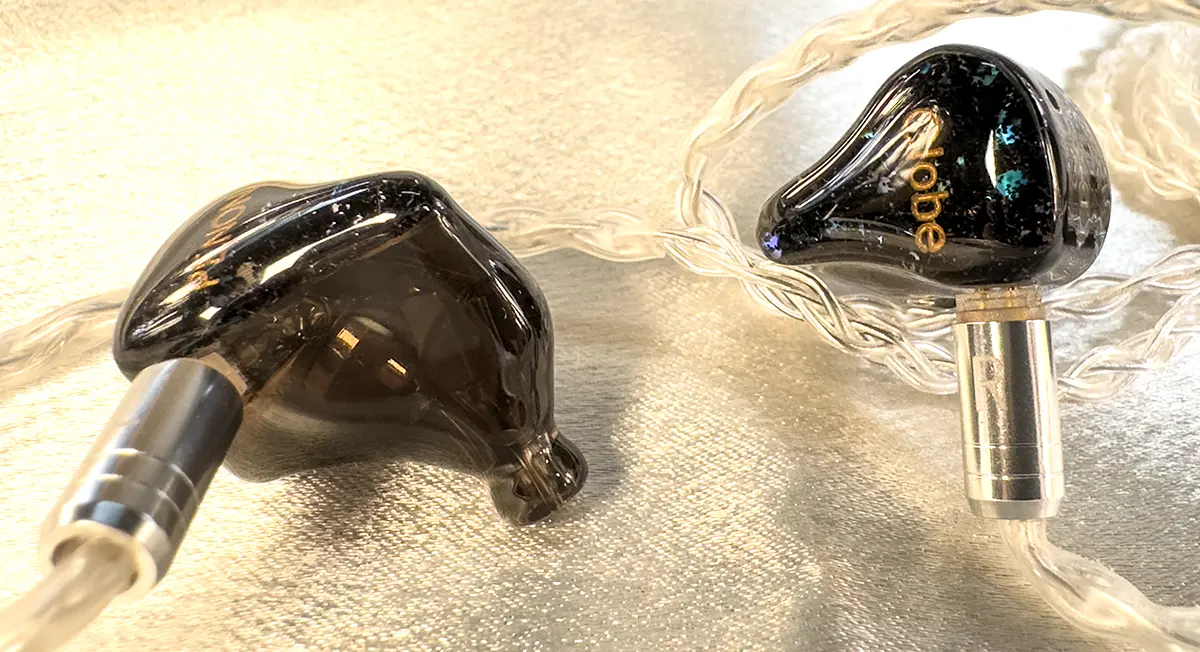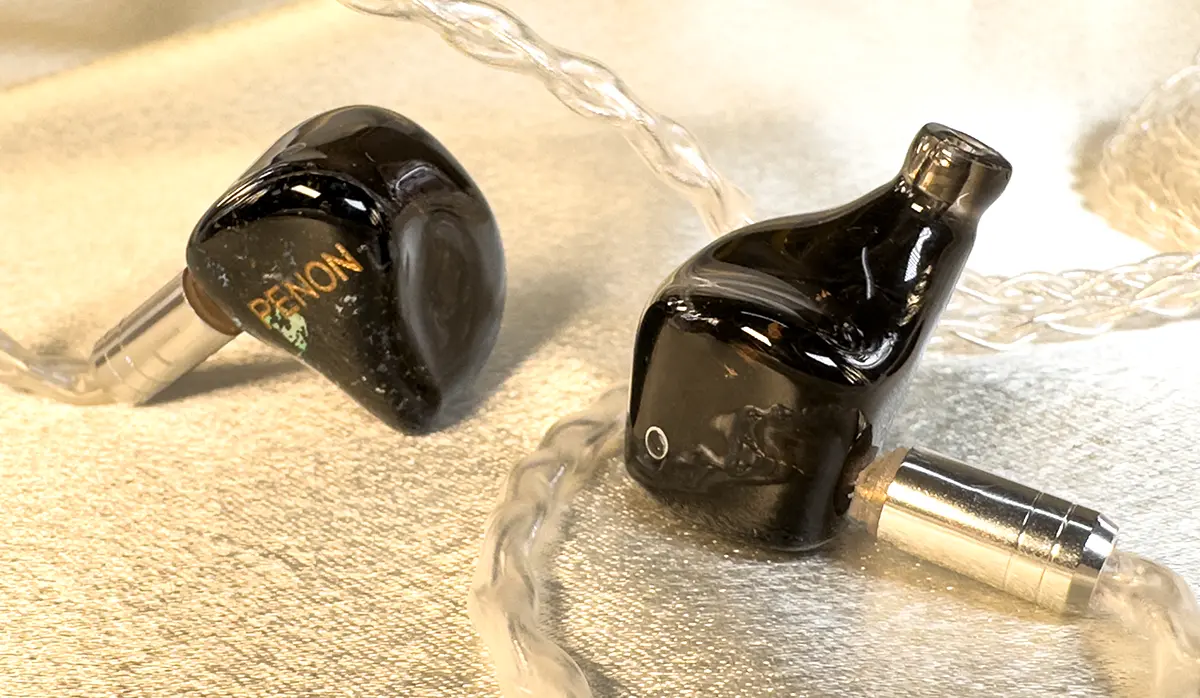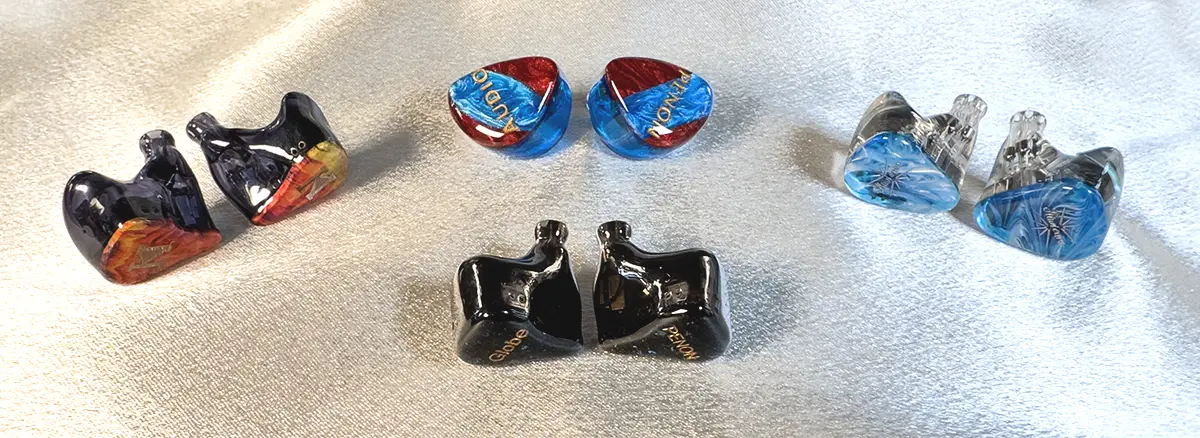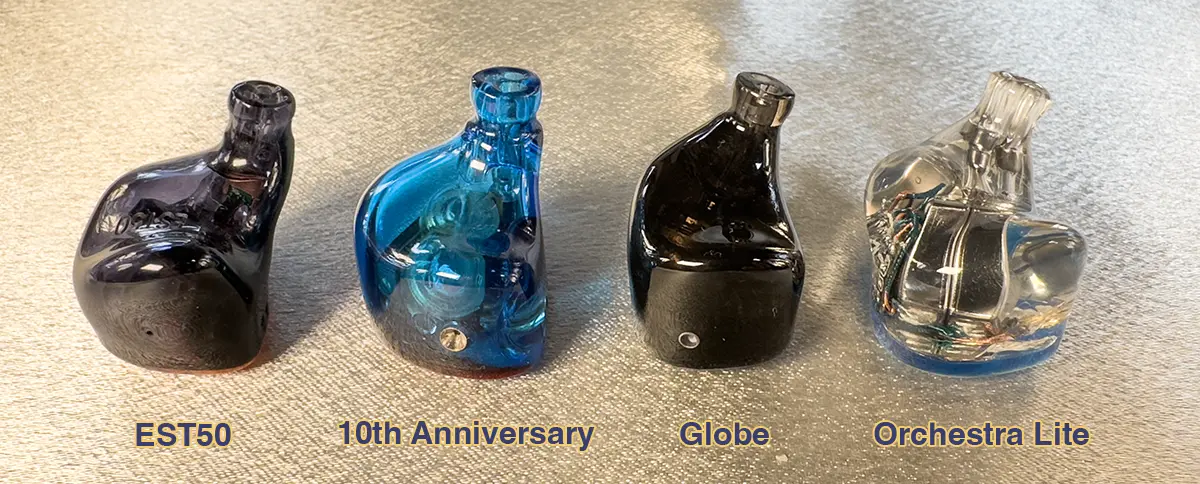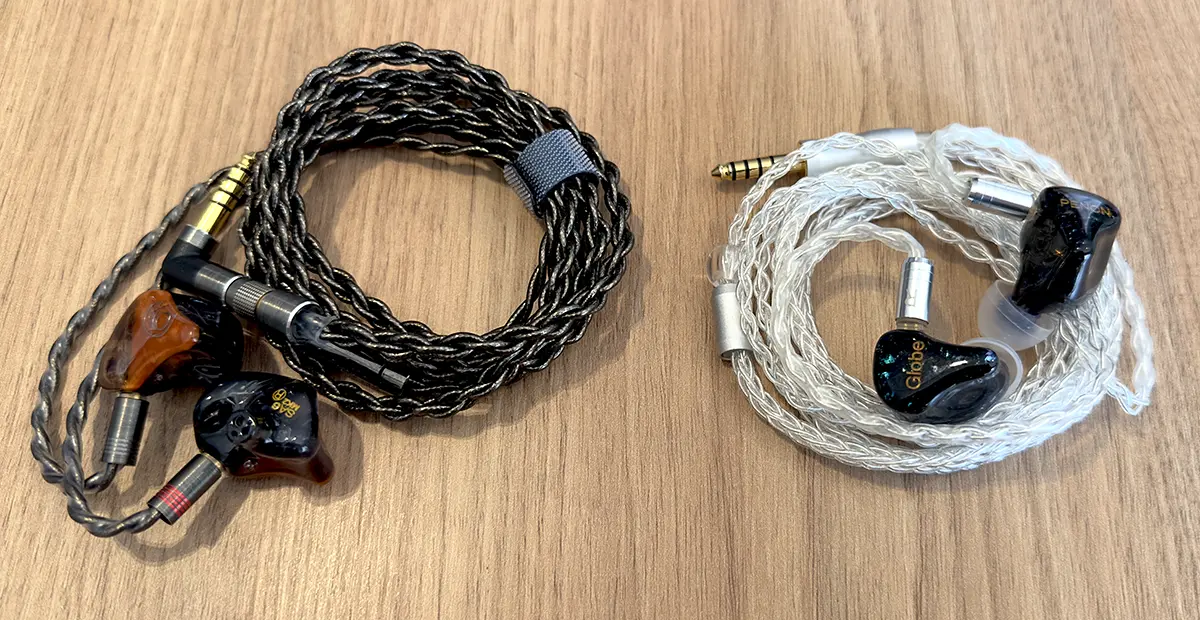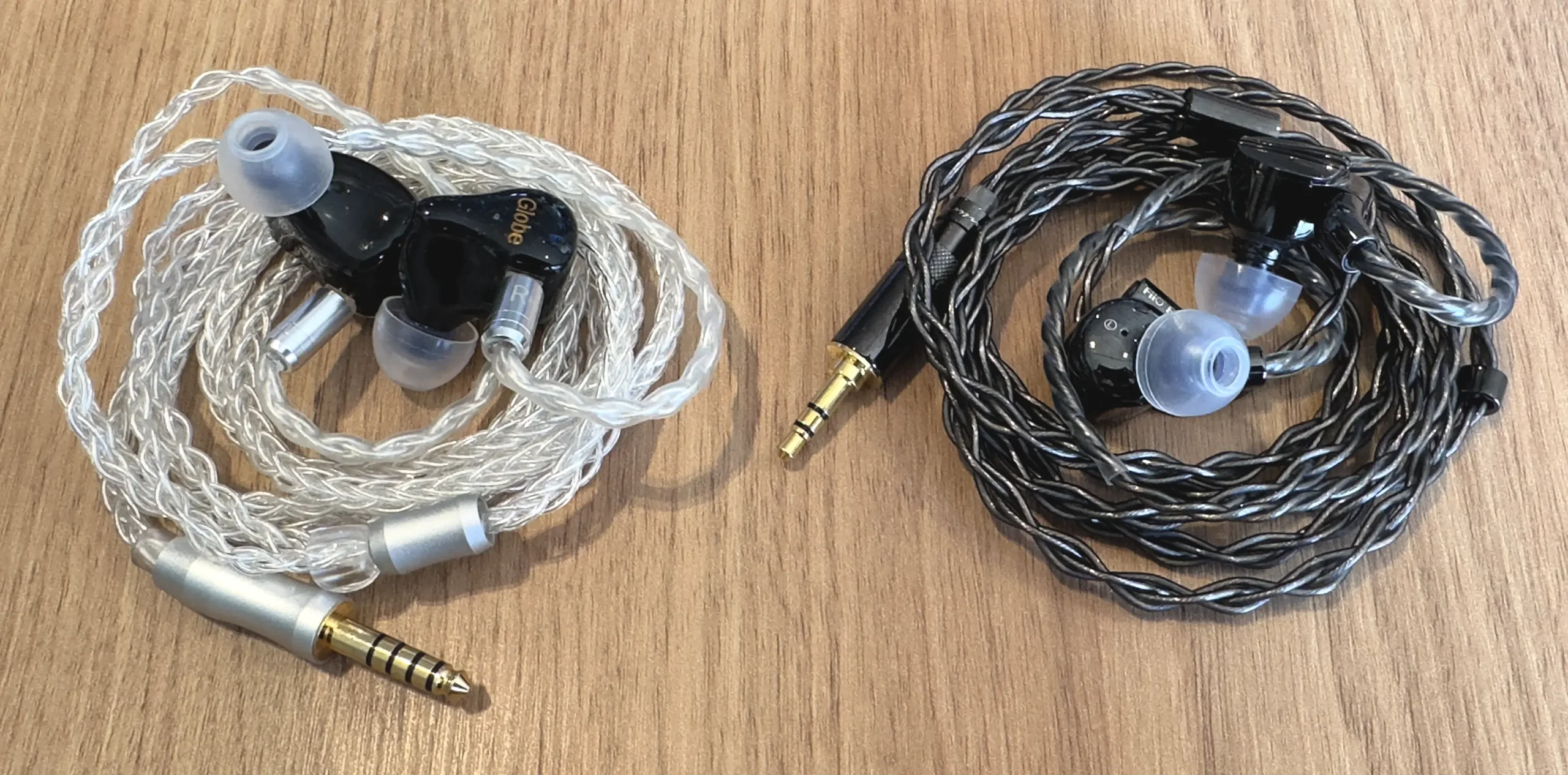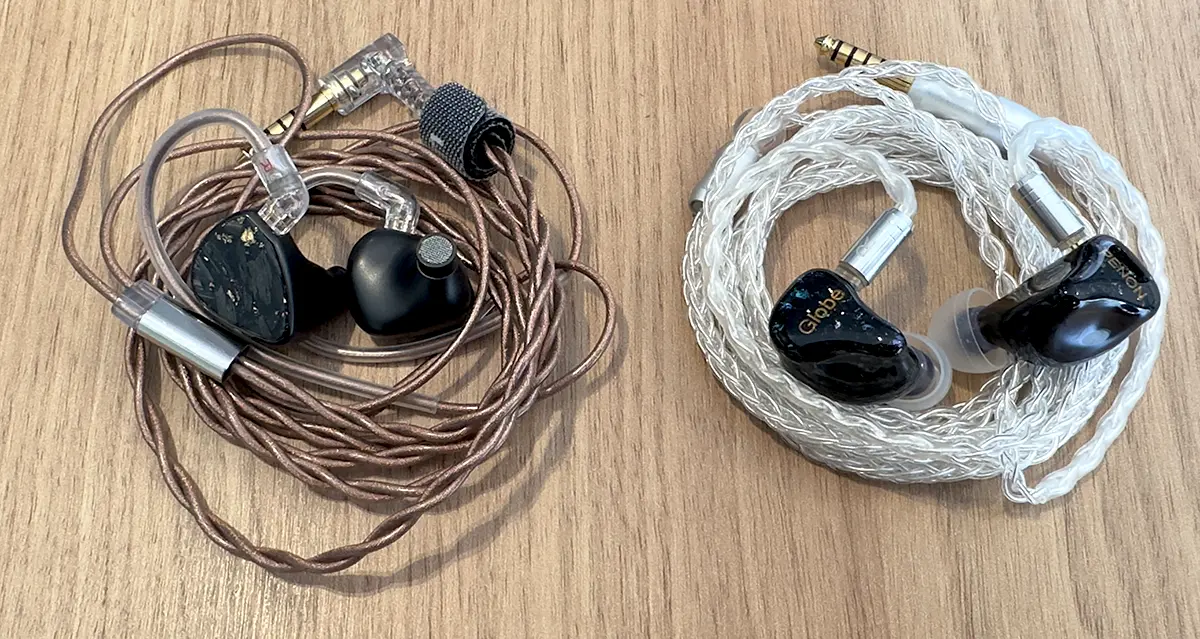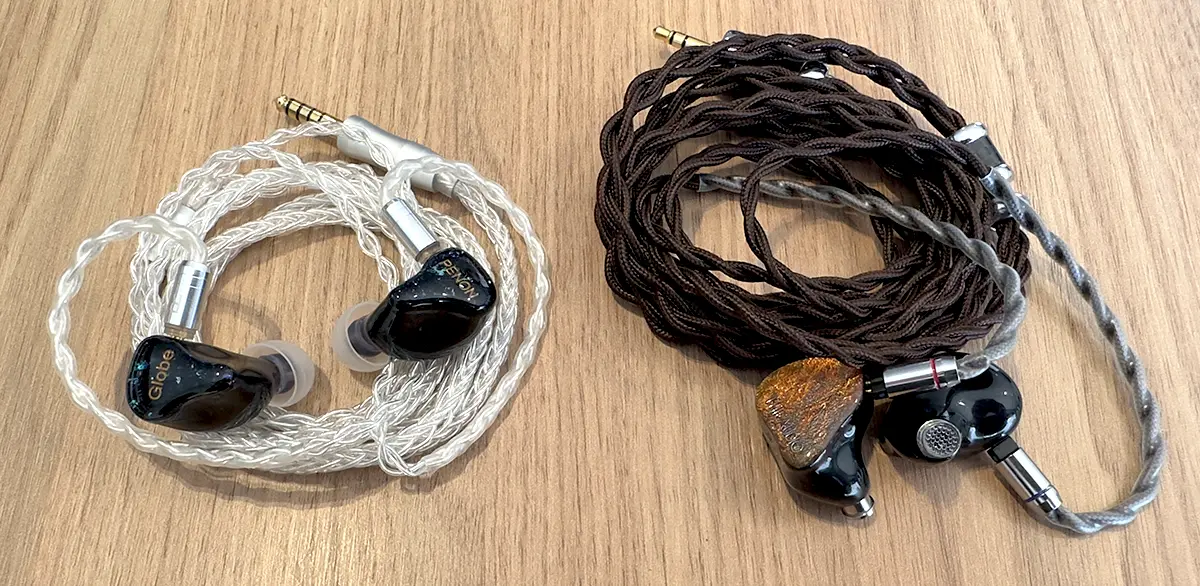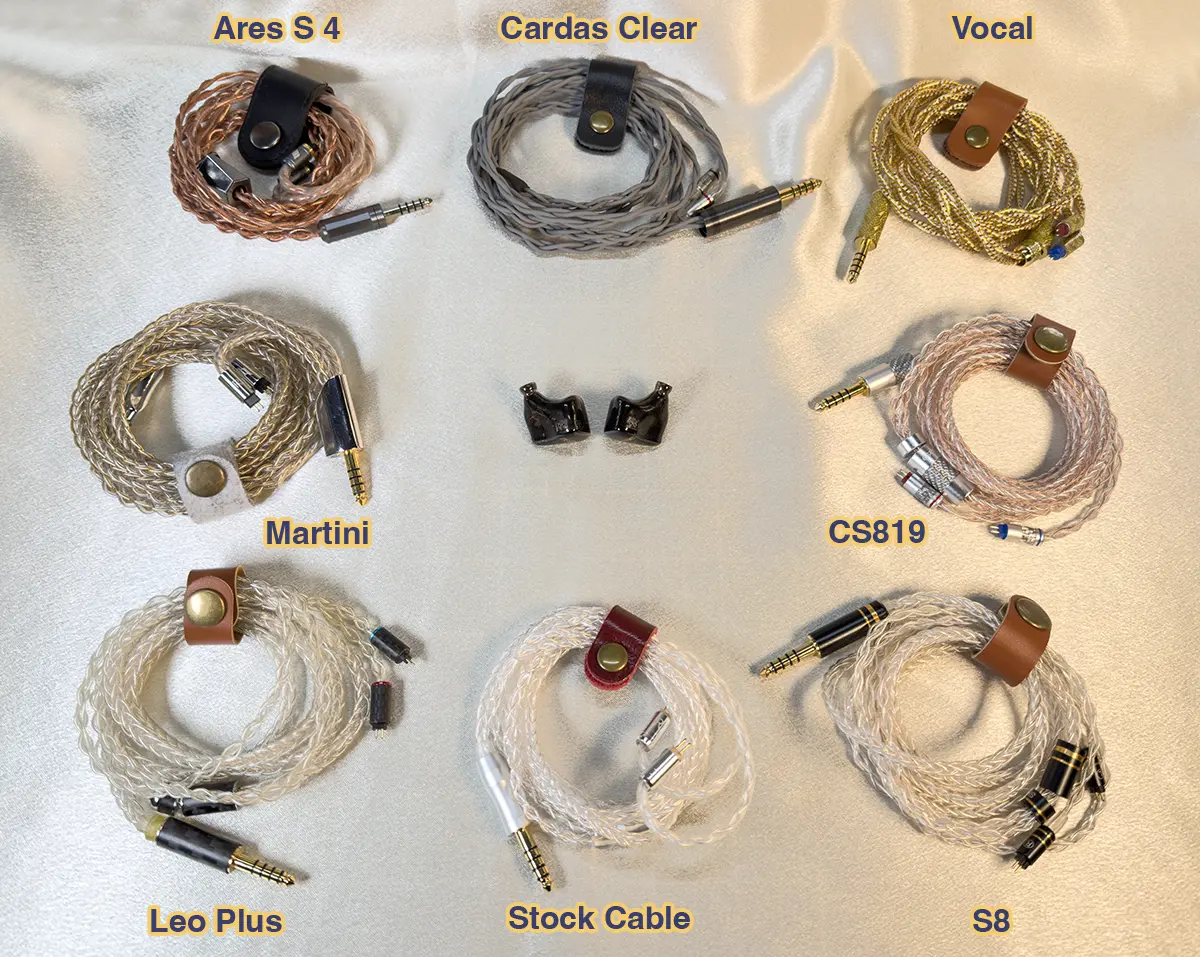What does it take to get your attention?
I asked myself this recently when surprised by
Penon Audio with an invitation to review another set of earphones, having previously been impressed by their
Impacts and
10th Anniversary.
It was during the tail end of completing my recent
IEM Cable Shootout (best described as 'torturous' for the reviewer, hopefully not the reader!) and the signs of PTSD were everywhere - after dreams filled with cotton vs linen bedsheet comparisons I'd wake up in cold sweats and begin A/Big pillows.
Determined to take a break after the shootout likely shaved several years off my life, Penon convinced me otherwise with that magic combination of syllables.... "we would like to give you" and "free".
Interestingly the Globes were never on my radar before arriving in the mail, and though Penon have a cult following among IEM collectors I get the impression the Globes haven't grabbed as much attention as some of their other options.
This may be explained by a few things - at $329 they're neither expensive enough to demand comparisons with IEMs worth thousands of dollars, nor are they cheap enough to be purchased en masse by those new to the hobby. Similarly their 1x DD, 2x BA driver configuration isn't flashy enough to grab headlines (no sexy EST or BCD drivers!) so there's no inherent promise of breaking new ground or taking the hobby in a radical new direction.
What I'm more concerned with is how do they sound, what sort of value do they offer, and how guilty am I going to feel for ignoring them?
Packaging
As was the case with previous Penon IEMs the Globes arrive in a small cardboard box, inside of which is a leather carry case containing the IEMs.
Along with a smaller leather accessories case, no less than four sets of eartips in three sizes are supplied, along with a cleaning tool & shirt clip. The overall package is fairly commensurate with the Globes' pricepoint though you may prefer a more lavish unboxing experience.
The stock cable is a very comfortable 8 wire silver-plated copper affair, in your choice of 4.4mm, 3.5mm or 2.5mm terminations.
Ergonomics
Physically the Globes are perhaps as close as a hybrid DD/BA earphone can realistically hope to match the size of a single-DD IEM. They're very small by modern hybrid standards, owing largely to their modest complement of just one DD and two BA drivers.
They do protrude a little but are so thin as to nestle in my ears very comfortably, and I can keep there for hours without the urge to re-seat them - aiding that comfort is their extremely smooth medical-grade resin shells. Also deserving of special mention are their gorgeous faceplates which glisten in the light with flecks of glittering aquamarine, an effect difficult to replicate in still photos.
The Globes' stock cable is extremely lightweight and flexible, but sporting fairly utilitarian hardware. Penon have added heatshrink earhooks to this particular cable unlike many in their range, and it must be said I do prefer the ergonomics of those without by a small margin.
Sound Impressions
I've used the Globes primarily with a Cayin N8ii DAP (in solid state mode with P+ enabled) using local files stored on a 1TB i400 Micron micro-SD card with my preferred Spinfit W1 tips. It should be noted the N8ii is tuned to emphasise treble & sub bass, so please factor that into account.
There are a few things I immediately notice when listening to the Globes. First off they're very easy to drive, requiring a volume between 14-16 on the N8ii as opposed to the 16-20 I'd typically set for other IEMs in my collection. That's great news for anyone who's audio source may not have the beefiest amplification - dongle users in particular may benefit here.
Then there's the tremendous cohesion. Perhaps that's due to the Globes containing just three drivers, and they work in conjunction harmoniously. The other standout is their midrange. I'm not sure how Penon accomplish this, but every Penon IEM I've heard seems to fix my attention on the lavish midrange experience that's essentially their hallmark. Difficult to verbalise, a good attempt I heard from one of the staff members at
Addicted to Audio in Melbourne described the Globe midrange as "hyper real".
Bass quantity is moderately above neutral, and they deliver a very solid bass performance with an even balance between midbass and sub bass emphasis. You'll also be reassured to learn speed has not been sacrificed to produce this capable low end, with the Globe DDs being surprisingly responsive in keeping up with busy passages.
Perhaps the downside is bass can occasionally feel a touch pillowy and thus greater slam & texture would be desirable, which perhaps marks the Globes as capable all-rounders rather than basshead specialists like the
ISN EST50s.
Midrange presence is a great strength of the Globes, with vocalists readily commanding your attention. There's a slight bias towards the upper rather than lower midrange, though I'm not sure if this explains why male vocals feel more satisfyingly convincing than female.
With no hint of recession in this area, instruments like electric guitars feel viscerally raw and forward, though I prefer the Globes with a copper cable to add extra warmth for genres like Rock music where additional coloration is desirable.
Treble is more than adequate on the Globes and there isn't an excessive amount of sparkle if you happen to be treble sensitive. However upper treble isn't quite as abundant as you may find on more expensive earphones, and this is where the EST drivers in physically-larger hybrids often do the heavy lifting.
With just one DD & two BAs, the Globes cover the entire frequency spectrum capably but I find there's a missing sense of overlapping abundance present in hybrids with much larger driver counts, particularly those costing thousands of dollars. The flipside is the low driver count is likely responsible for the Globes' admirable cohesion, and area other hybrids can fall short in.
Technical Performance
To begin with the Globes' strength, resolution is commendable given their relatively modest price and low driver count. At no point listening with them do I ever feel like essential information extracted by more expensive earphones is being excluded or obscured. The Globes' very detailed, forward midrange really helps in this regard, though it can feel like details are being pushed towards me with a hint of grain in a manner IEMs with EST drivers can deliver more effortlessly.
On other fronts the Globes are adequate but perhaps not exceptional among IEMs under the $500 mark. Their soundstage is of middling width but depth is unfortunately quite poor. This can be improved by swapping to a more expensive cable but only to a limited extent. The stage never feels claustrophobic, but seems to exist mostly in front of me rather than wrapping around the sides of my head.
Imaging, separation and dynamics are similarly average, rarely calling attention to themselves in either a positive or negative fashion. The Globes' technical chops aren't pronounced enough to enhance my musical enjoyment, nor do they impede it.
IEM Comparisons
So how do the Globes stack up against similarly priced competition? I compared them with several IEMs on hand to answer that...
Kiwi Ears Orchestra Lite - 8xBA (USD $249)
The Orchestra Lites are quite large & surprisingly heavy considering they lack a dynamic driver, but those larger dimensions perhaps contribute to the excellent seal I'm able to obtain with them and the impressive isolation they provide.
Requiring a volume of 20 on the N8ii with high-gain, as opposed to 16 for the Globes suggests they're slightly more difficult to drive. More difficult still to accept is the Orchestra Lite's claustrophobic soundstage, which despite not being dramatically narrow feels more 'in my head' than usual, with sounds projecting more to the rear of my skull than in front of it.
The Orchestra Lites have the virtue of being extremely fast and responsive as you might expect from an all-BA earphone, but although bass quantity is sufficient, as expected texture is lacking. By comparison treble is quite prominent and zingy, and the presentation feels weighted more heavily towards upper rather than lower midrange. The Orchestra Lites deliver a slightly greater perception of detail than the Globes, but their plasticky tonality and mediocre bass reproduction doesn't seem worth the tradeoff.
ISN EST50 – 1xDD, 2xBA, 2xEST (USD $449)
Marginally larger than the Globes and similarly easy to drive (volume 16 on the N8ii) the EST50s don’t feel quite as snug in the ear and jut out a bit further.
Despite the Globes having no lack of bass heft, immediately noticeable is how much deeper & more impactful bass is felt on the EST50s, with superior texture to boot. The soundstage is also wider and slightly deeper, and though I've commented previously that the EST50s are rather excitable they're surprisingly less so than the Globes, which feel even more upfront.
Resolution is slightly higher on the EST50s -perhaps thanks to their EST drivers- and vocals are more refined yet lack the body & presence of the Globes, sounding further away from the listener. Treble is a little smoother yet more detailed. The EST50s have a more effortless, wider V-shaped presentation overall with thunderous bass the standout.
Penon 10th Anniversary -
2xDD, 2xBA, 2xEST (USD $499)
Requiring Vol 19 on the N8ii the 10th Anniversaries are slightly harder to drive than the Globes, and their shells quite a bit larger. I do find the Globes more comfortable for multi-hour listening sessions but this isn't enough to dissuade me against the 10th Anniversaries.
With a slightly wider & deeper stage the 10th Anniversaries also boast superior bass texture, though I perceive that bass to be slower which is perhaps a result of not one but two DDs producing it, and midbass feels emphasised over sub bass.
The 10th Anniversary midrange boasts higher resolution & superior imaging, yet bafflingly there's a sense of diffuseness suggesting a lack of cohesion, with perhaps the two DDs again being the culprit. However instruments feel larger, and the background blacker. The 10th Anniversaries undoubtedly feature a smoother, more refined tonality with effortless resolution provided by the EST drivers.
Additional IEM Comparisons
Not content with comparing the Globes to earphones close to hand, I paid a visit to
Addicted to Audio in Melbourne with the intent of testing them against popular IEMs with similar prices.
Do bear in mind these impressions were gathered in a rather noisy environment, as they were busy that morning with much background chatter from customers so only general differences will be noted here.
Dunu SA6 MK2 – 6xBA (USD $579)
Immensely larger with geometry more rigorously sculpted to the ear, the SA6 MK2s also isolate more effectively than the Globes but are heavier and less comfortable overall.
Bass is surprisingly satisfying given they lack a DD, yet there's no mistaking that BA-bass texture which lags behind the Globes' more gratifying slam. Similarly easy to drive from the N8ii, the SA6 MK2s feature a wider, flatter stage and a smooth character.
Vocals are set further back from the listener and lack the Globes' richness & presence, but instead come across as less excited & more refined. Dynamics are also lacking, and transients feel softened which prevents detail jumping out quite as much.
FiiO FD7 - 1xDD (USD $579)
The FD7's metal shells are heavy, but quite small given their single driver configuration so I have trouble obtaining a good seal. Requiring 26 on the N8ii they're surprisingly difficult to drive and that's not where the bad news ends.
The sluggish speed of the FD7's DD drivers are immediately apparent, and their soundstage is very flat and narrow. Bass quantity is similar to that of the Globes and tends to favour midbass but is nonetheless impressive, and vocals have good presence.
This is a clearcut example of where I believe hybrid IEMs have surpassed their single-DD counterparts, as although the Globes are considerably cheaper their technical performance is far ahead of the FD7s to the extent I unhesitatingly favour the Globes and the result isn't even close.
Letshoer EJ07M - 1xDD, 2xBA, 1xEST (USD $669)
Surprisingly smaller than the Globes without being moulded to the ear quite as much, the EJ07M's steel shells have a very smooth finish and are extremely comfortable despite their significant weight.
Requiring 22 on the N8ii, the EJ07Ms feature similarly competent bass texture to the Globes, with a wider more open stage, but lack the addictive midrange magic of the Globes. Where the EJ07Ms pull ahead is in the responsiveness of their DD which make that of the Globes feel sluggish - something not obvious without comparing them side-by-side.
The EJ07Ms also boast higher quality treble that generates appreciably greater resolution, yet they maintain a fantastic sense of coherence. Indeed I've been extremely impressed by them, though their price premium over the Globes is significant.
Thieaudio Monarch MKII - 1xDD, 6xBA, 2xEST (USD $999)
Physically much larger than the Globes but not too uncomfortable, the Monarchs require a massive 30 on the N8ii suggesting they pair best with powerful sources.
What's immediately apparently is how flatly they're tuned, with a very unexciting presentation I don't particularly care for - the Globes are much more engaging & lively. Bass quality & texture is also a weakness of the Monarchs, another area the Globes have them covered.
Technical performance is where the Monarchs shine, with a wider & deeper stage than the Globes, sharper imaging, and higher midrange resolution despite their lack of warmth. The tradeoff is how uninvolved the Monarchs leave me feeling, though conceivably this may suit certain genres & listeners.
Cable Comparisons
As an unashamed cable aficionado, naturally I can't resist learning how effectively the Globes scale with fancy expensive cables.
Globe Stock Cable
This relatively slender silver-plated 8 wire cable is very comfortable to use. It pushes the midrange forward yet imaging feels a touch congested. Bass is also a weakness, which comes across a tad mushy on the stock cable.
Treble is emphasised as this cable is bright by nature, but there's a lack of note weight which curbs the Globes' performance with genres like rock. Though adequate it feels like there's room for improvement.
ISN S8 (USD $32.50)
Dynamics are immediately improved by swapping to the S8 and the stage grows in width, though depth is slightly shallower than stock. There's extra treble sheen which you may or may not want.
I do prefer pairing the Globes with copper cables, which seem to provide that extra bit of midbass punch needed to flesh out their presentation.
Penon CS819 (USD $49)
In this very impressive pairing, the Globes' stage is both wider and deeper with instruments given more room to breathe, and even midrage clarity seems to have improved with vocals sounding more natural - though not quite as impressive as the Penon Vocal cable in that regard.
Bass is also more impactful, though similar in quantity to that of the stock cable. CS819 generates a more organic, less "digital" sound that's a surprisingly large improvement over the stock cable.
Penon Vocal (USD $69)
As the name suggests, Vocal adds greater articulation & resolution to the Globes midrange, and a greater impression of refinement & sophistication. Considering the midrange is already a strength of the Globes this nudges them towards becoming a vocal specialist.
The soundstage is deepened slightly but width remains similar, dynamics are moderately increased and bass feels deeper as well. I do prefer the CS819 pair up for multi-genre listening, unless you choose to prioritise vocal-centric music.
Effect Audio Ares S 4 Wire (USD $179)
The Globe midrange immediately sounds more meaty with improved resolution and presence, and dynamics & bass texture are similarly boosted.
Similar to CS819, the Ares S stage doesn’t necessarily feel much larger yet somehow instruments seem like they have more room to breathe. I do prefer the CS819 pair up which has slightly better dynamics and less bottom end emphasis, delivering a more even sonic balance.
Penon Leo Plus (USD $249)
One again I'm slightly disappointed with the Leo Plus cable in this pairing.
Soundstage depth is improved impressively, but treble is boosted to such an extent sounds like cymbals are far more intrusive, and with that comes a whispy tonality I don't particularly care for.
Liquid Links Martini (USD $349)
As the only larger 8 wire cable in this comparison, Martini delivers the substantially boosted dynamics, improved bass and wider & deeper stage dimensions you'd expect from such a weighty cable.
Speaking of heft even note weight is improved, ably fleshing out any perception of thinness in the Globes' presentation. As such I enjoy this pairing even more than using the CS819, though the price difference is almost as significant as the cost of the Globes themselves.
Cardas Clear (USD $320 parts cost) / PW Audio 1950s (USD $2149)
To my complete lack of surprise, the Cardas Clear (DIY PWA 1950s clone) delivers the same superb performance with the Globes it demonstrated in my recent
IEM cable shootout.
Dynamics are boosted significantly, bass feels more impactful, the stage is wider & deeper, and vocals are beautifully smooth & rich. Treble reproduction is terrific too, but without the feeling details are being shoved in one's face. Essentially this feels like a direct upgrade in most ways to the CS819 pairing, with a faultless balance of great tonality and superb technical performance.
Conclusion
Ah, you've made it to the end. Good, I was worried those cable comparisons might slow you down.
So what has this review taught us about the Globes? Perhaps the biggest takeaway is there is no big takeaway, no overwhelming attribute we can point to as the definitive reason to purchase or avoid them. Certainly they're small, comfortable, cohesive with a terrific midrange and commendable bass output which augurs strongly for the their value at this pricepoint.
Ironically some of the stiffest competition comes from Penon's own collection in the form of
Turbo,
10th Anniversary,
Fan 2, and
Serial. Despite being great all-rounders, you may find the Globes lack a compelling reason to purchase them over one of those instead. That's the danger of products that are capable in most ways, but lack the dramatic strengths & weaknesses to support easy classification.
That may be why the Globes have been oft overlooked in a market saturated with capable performers, but crying out for distinctive offerings. However if you'd prefer to ignore the hype and choose an under-the-radar option, you'll probably enjoy the Globes as I have.



